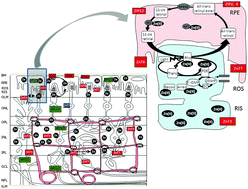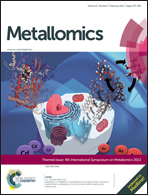Recent advances in the understanding of the role of zinc in ocular tissues
Abstract
Zinc levels are high in ocular tissues and the distribution is non-uniform. Zinc is particularly concentrated in the corneal epithelium and posterior stroma. Zinc is the most abundant trace metal in the retina. Bound-zinc is particularly located in the inner nuclear layer, (e.g. forming part of the structure of zinc finger transcription factors), while loosely-bound zinc is prominent in the retinal pigment epithelium and photoreceptor layers. Loosely-bound zinc ions in the photoreceptors might play a role in the phototransduction cascade and rhodopsin regeneration. Loosely-bound zinc is also found in presynaptic vesicles of photoreceptor cells in the outer plexiform and inner plexiform layers and can be synaptically released to affect both ionotropic and metabotropic receptors and also ion channels to modulate neurotransmission. The correct amount of loosely-bound zinc ions is maintained by regulating the function of zinc transporters, sensors and trafficking/storage proteins (i.e. metallothionein). The retinal homeostasis of zinc is dysregulated in systemic zinc depletion, aging and diseases such as age-related macular degeneration. Manipulation of retinal zinc metabolism in these situations might improve visual function.

- This article is part of the themed collection: Fourth International Symposium on Metallomics, Oviedo, Spain

 Please wait while we load your content...
Please wait while we load your content...